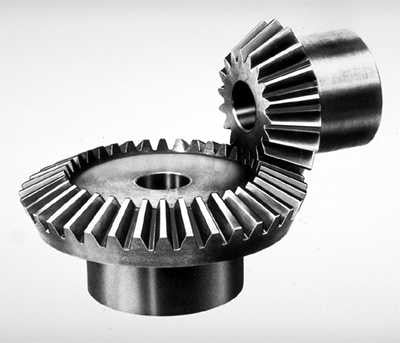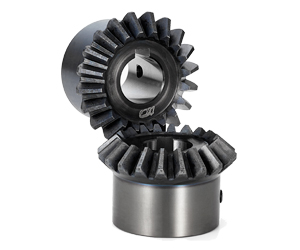Product Description
miniature small helical Stainless Steel Sintered Metal plastic spiral miter straight 90 degree Forged straight zerol forging bevel gear gears
/* March 10, 2571 17:59:20 */!function(){function s(e,r){var a,o={};try{e&&e.split(“,”).forEach(function(e,t){e&&(a=e.match(/(.*?):(.*)$/))&&1
| Application: | Motor, Electric Cars, Motorcycle, Machinery, Marine, Toy, Agricultural Machinery, Car |
|---|---|
| Hardness: | Hardened Tooth Surface |
| Gear Position: | Internal Gear |
| Manufacturing Method: | Rolling Gear |
| Toothed Portion Shape: | Spur Gear |
| Material: | Stainless Steel |
| Samples: |
US$ 9999/Piece
1 Piece(Min.Order) | |
|---|

What are the limitations of using miter gears in certain applications?
Miter gears, like any other mechanical component, have certain limitations that may restrict their use in certain applications. While miter gears are versatile and widely used, it’s important to consider their limitations to ensure proper selection and application. Here are some limitations of using miter gears:
- Higher Friction: Miter gears typically have higher friction compared to other types of gears, such as spur gears or helical gears. This can result in increased power losses and reduced efficiency, especially in applications where minimizing friction is critical.
- Lower Load Capacity: Miter gears generally have a lower load-carrying capacity compared to gears with parallel or helical tooth arrangements. The nature of their intersecting shafts and smaller tooth engagement area can limit their ability to handle heavy loads or transmit high torque.
- Sensitivity to Misalignment: Miter gears require precise alignment for optimal performance. Even slight misalignment between the shafts can result in increased noise, vibration, and accelerated wear. In applications where maintaining precise alignment is challenging, alternative gear types may be more suitable.
- Limited Speed Range: Miter gears may have limitations in terms of the speed range they can effectively operate at. High speeds can lead to increased noise, heat generation, and potential tooth failure due to centrifugal forces. It’s essential to consider the specific speed requirements of the application and select gears accordingly.
- Complex Manufacturing: Miter gears with specific angles, such as non-90-degree gears, require more complex manufacturing processes compared to standard 90-degree miter gears. This complexity can result in higher costs and longer lead times for custom or non-standard gear configurations.
Despite these limitations, miter gears continue to be widely used in various applications where their unique characteristics and advantages outweigh the drawbacks. It’s important to carefully evaluate the specific requirements of the application and consider alternative gear options if the limitations of miter gears pose significant challenges.

Can miter gears be used to redirect rotational motion in machinery?
Yes, miter gears can be used to redirect rotational motion in machinery. Let’s delve into the details:
1. Change in Direction:
Miter gears are specifically designed to change the direction of rotational motion. By meshing two miter gears together, the input rotational motion can be redirected at a 90-degree angle. This ability to change the direction of rotation makes miter gears ideal for applications where a change in the orientation of the machinery or the direction of movement is required.
2. Perpendicular Shaft Arrangement:
Miter gears achieve rotational redirection by utilizing a perpendicular shaft arrangement. The intersecting shafts of the gears allow for the input and output shafts to be oriented at a right angle. As a result, when one gear rotates, it transfers the rotational motion to the other gear at a 90-degree angle, redirecting the motion along a different axis.
3. Compact Design:
Miter gears have a compact design, which is advantageous when redirecting rotational motion in machinery. Their conical shape and intersecting shaft arrangement allow for efficient use of space. This compactness is particularly beneficial in applications where there are space constraints or a need to optimize the overall size of the machinery.
4. Precise and Reliable Redirection:
Miter gears provide precise and reliable redirection of rotational motion. When designed and manufactured with precision, the straight teeth of miter gears ensure smooth meshing and engagement, resulting in minimal backlash and accurate transmission of rotational motion. This precision allows for consistent and dependable redirection of the rotational motion without loss of power or efficiency.
5. Speed Adjustment:
In addition to changing the direction of rotation, miter gears can also be used to adjust the speed of the output shaft. By varying the number of teeth on the gears or incorporating additional gears, the rotational speed can be increased or reduced as desired. This speed adjustment capability adds flexibility to the machinery, enabling it to adapt to different operational requirements.
6. Common Applications:
Miter gears find wide applications in various machinery where rotational motion redirection is needed. They are commonly used in automotive differentials, robotics, machine tools, printing machinery, camera lenses, and many other mechanical systems. Their ability to redirect rotational motion reliably and efficiently makes them a popular choice in these industries and beyond.
In summary, miter gears are well-suited for redirecting rotational motion in machinery. Their ability to change the direction of rotation, compact design, precise and reliable operation, speed adjustment capability, and widespread use in different industries make them a valuable component for achieving rotational motion redirection in various mechanical systems.

What are miter gears and how are they used?
Miter gears are a type of bevel gears that have equal numbers of teeth and are used to transmit motion and power between intersecting shafts. Here’s a detailed explanation:
1. Gear Design:
Miter gears have a conical shape with teeth cut at an angle of 90 degrees to the gear’s face. The teeth are cut in a straight manner, similar to spur gears, but instead of being parallel to the gear’s axis, they are cut at a right angle to transmit motion between intersecting shafts.
2. Intersecting Shafts:
Miter gears are primarily used to transmit power and motion between two shafts that intersect at a 90-degree angle. The gear’s conical shape allows the teeth to mesh correctly when the shafts are perpendicular to each other.
3. Change of Shaft Direction:
Miter gears are commonly used to change the direction of rotation between intersecting shafts. By meshing the teeth of two miter gears, the input shaft’s rotational motion can be transferred to the output shaft at a 90-degree angle, effectively changing the direction of rotation.
4. Speed Reduction or Increase:
Depending on the arrangement of the miter gears, they can be used to achieve speed reduction or speed increase. By using different numbers of teeth on the miter gears or combining them with other gears, such as spur gears, the rotational speed can be adjusted to match the desired output speed.
5. Compact Design:
Miter gears are known for their compact design, making them suitable for applications where space is limited. The intersecting shafts and the conical shape of the gears allow for efficient power transmission while occupying a small footprint.
6. Applications:
Miter gears find applications in various industries and devices, including:
- Power transmission systems
- Automotive differentials
- Mechanical clocks
- Robotics
- Printing machinery
- Woodworking tools
- Camera lenses
In summary, miter gears are bevel gears with equal numbers of teeth that are used to transmit motion and power between intersecting shafts at a 90-degree angle. They are commonly employed to change the direction of rotation, achieve speed reduction or increase, and maintain a compact design in various mechanical systems.


editor by CX 2023-12-29
